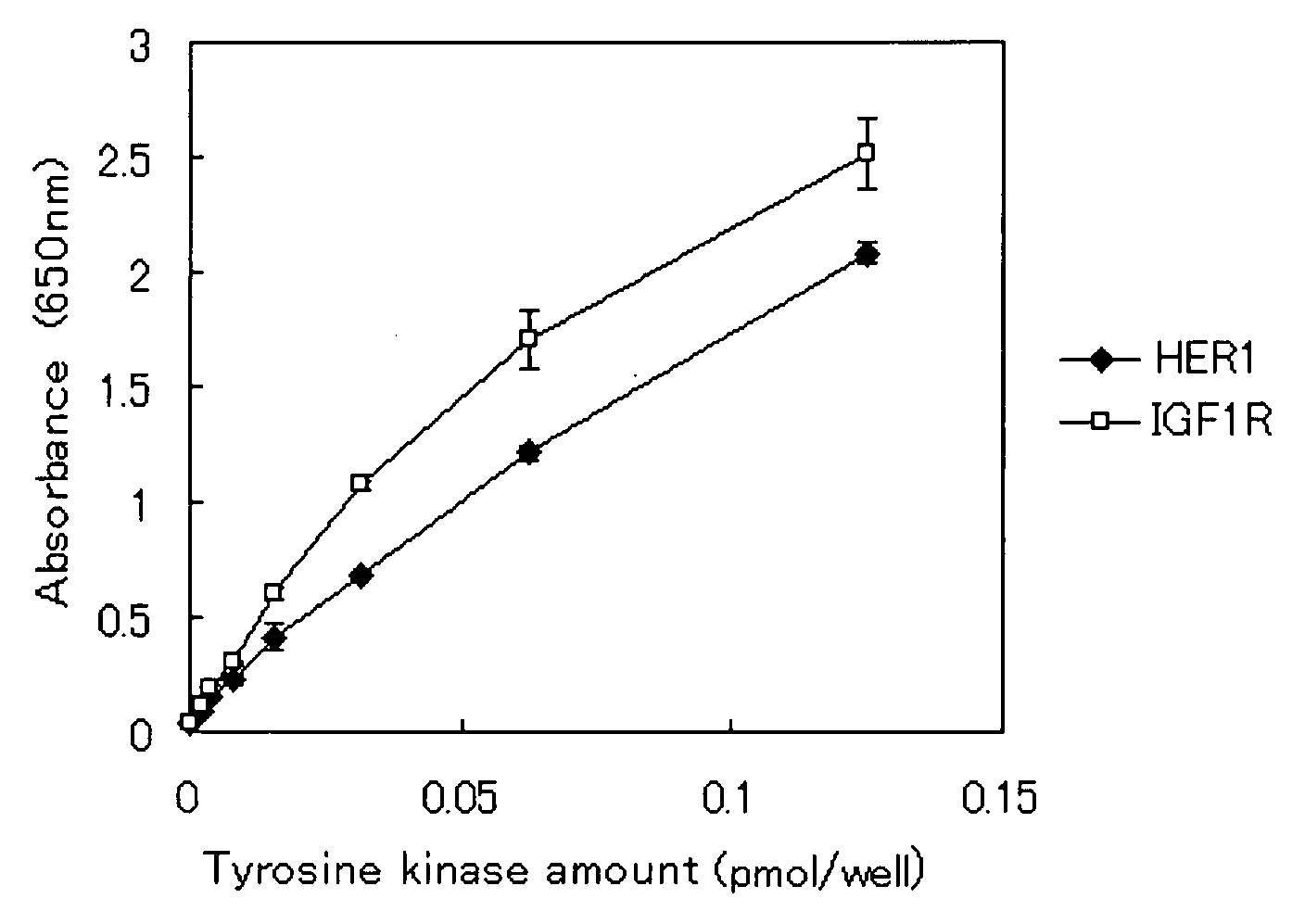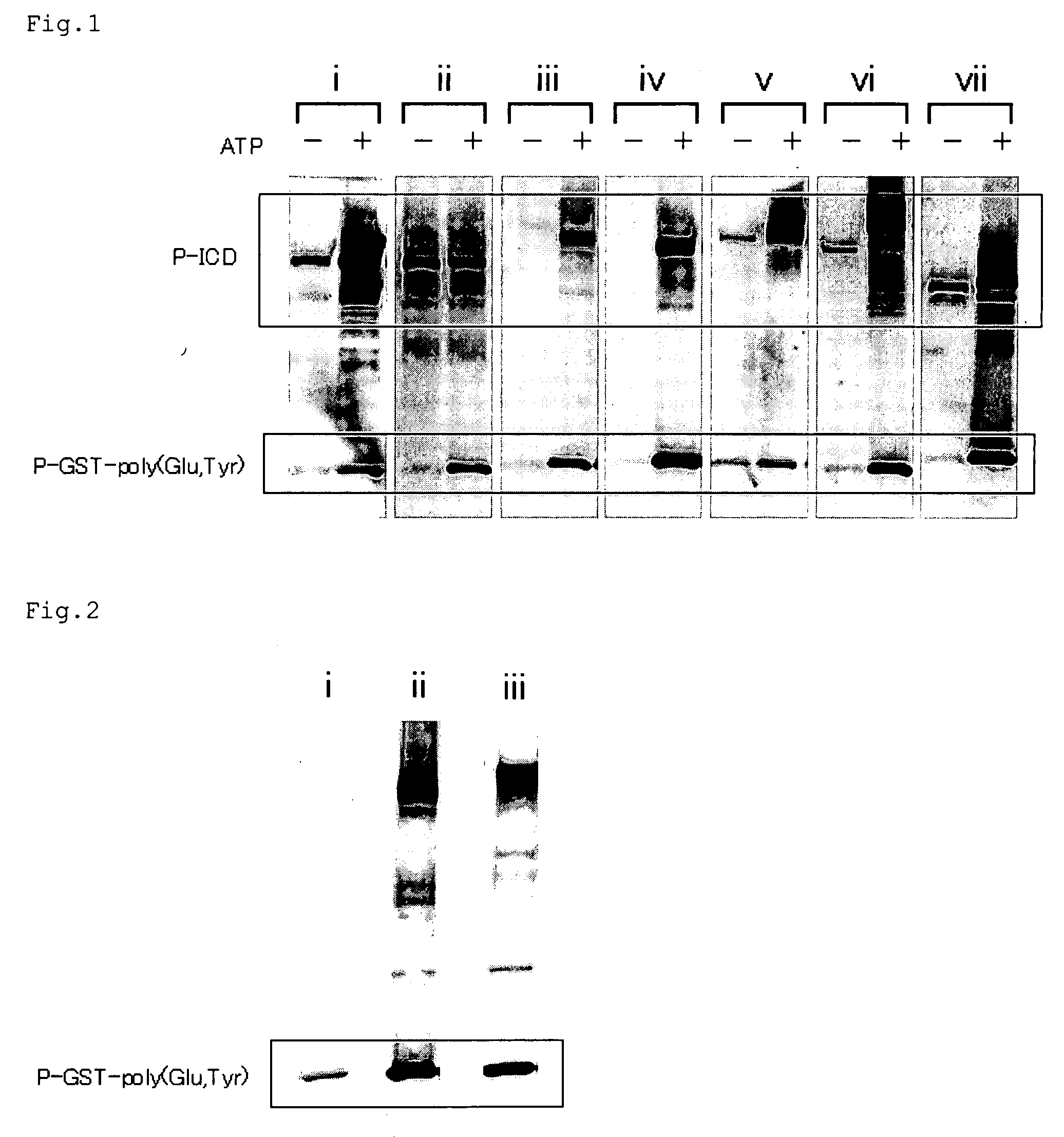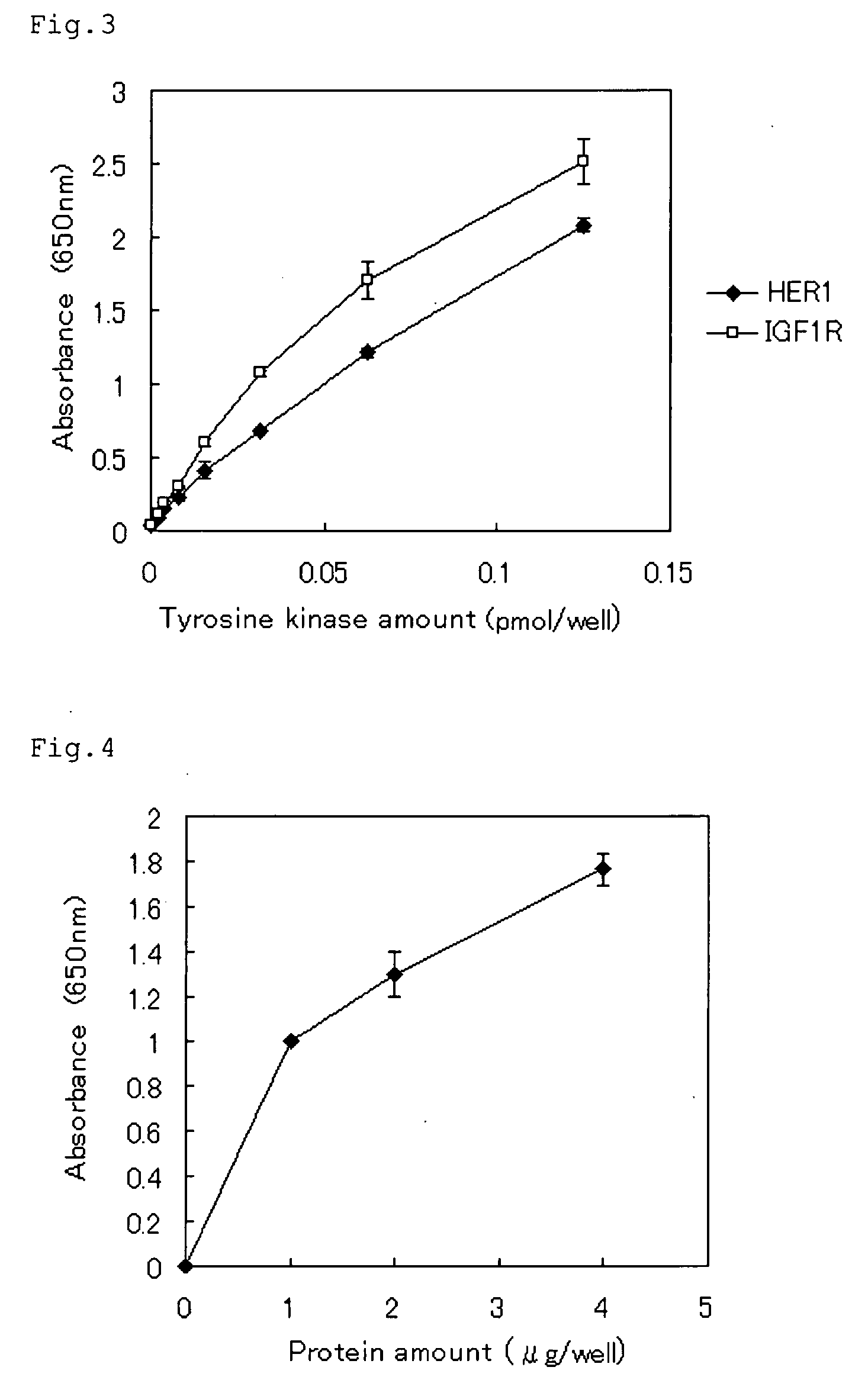Tyrosine kinse substrate
a kinase substrate and tyrosine kinase technology, applied in the field of tyrosine kinase substrates, can solve the problems of difficult to control the length of a peptide, the inability to manufacture synthetic peptides of uniform molecular weight, and the cell can not be reactivated
- Summary
- Abstract
- Description
- Claims
- Application Information
AI Technical Summary
Benefits of technology
Problems solved by technology
Method used
Image
Examples
example 1
Preparation of Tyrosine Kinase Substrate
[0035] A fusion protein of a peptide (hereinafter, referred to as poly (Glu, Tyr) peptide) and a GST protein was prepared. The poly (Glu, Tyr) peptide consists of an amino acid sequence (SEQ ID No.: 1) in which a sequence consisting of four glutamic acid residues and one tyrosine residue is repeated five times. This fusion protein was used as a substrate which can be phosphorylated by a plurality of kinds of tyrosine kinases. Hereinafter, this fusion protein is referred to as GST poly (Glu, Tyr) fusion protein.
[0036] The GST poly (Glu, Tyr) fusion protein was prepared by the following method. First, PCR was performed using a DNA (SEQ ID No.: 2) encoding an amino acid sequence (SEQ ID No.: 1) of the poly (Glu, Tyr) peptide, a sense primer (SEQ ID No.: 3) designed based on a nucleotide sequence of this DNA, an antisense primer (SEQ ID No.: 4), and KOD plus DNA polymerase (TOYOBO., LTD.). The amplification product (hereinafter, referred to as ...
example 2
Detection of Phosphorylation of Fusion Protein by Western Blotting using Intracellular Domain of Receptor Tyrosine Kinase
[0037] Herein, using an intracellular domain (ICD) of a commercially available receptor tyrosine kinase, the GST-poly (Glu, Tyr) fusion protein prepared in Example 1 was phosphorylated. Then, the phosphorylated GST-poly (Glu, Tyr) fusion protein was detected by Western blotting. A receptor tyrosine kinase is composed of an extracellular domain, a transmembrane domain, and an intracellular domain, and a site exhibiting the activity of a tyrosine kinase is present in the intracellular domain.
1. Method of Preparing Reaction Sample
[0038] 50 μl of a buffer 1 (containing 20 mM HEPES pH 7.4, 10 mM MnCl2, 1% NP40, 1 mM DTT, 0.2% protease inhibitor (hereinafter, referred to as PI), 10% glycerol, 200 μM Na3VO4 and 50 mM NaF) and 0.5 pmol of ICD of a commercially available receptor tyrosine kinase were mixed, and The mixture was used as a sample for a reaction. In the p...
example 3
Detection of Phosphorylation of Fusion Protein by Western Blotting using Receptor Tyrosine Kinase Extracted from Cell Membrane
[0046] Herein, a receptor tyrosine kinase was extracted from a cell membrane of a cultured cell derived from a breast cancer, and the extracted receptor tyrosine kinase was used to phosphorylate GST-poly (Glu, Tyr) fusion protein prepared in Example 1. Then, the phosphorylated GST-poly (Glu, Tyr) fusion protein was detected by Western blotting.
1. Method of Preparing Reaction Sample
[0047] A cultured cell (MDA-MB231) derived from a breast cancer was cultured in a 225 cm2 flask to 80% confluent (about 107 cells) This cultured cell and 1 ml of a buffer 2 (containing 20 mM HEPES pH 7.4, 0.2% PI, 10% glycerol, 200 μM Na3VO4, and 50 mM NaF) were mixed. Then, a cell membrane of the cultured cell in the mixture was destroyed by pressuring with a pestle to obtain a cell solution. The resulting cell solution was centrifuged, and the supernatant was discarded. A pre...
PUM
| Property | Measurement | Unit |
|---|---|---|
| molecular weight | aaaaa | aaaaa |
| molecular weight | aaaaa | aaaaa |
| pH | aaaaa | aaaaa |
Abstract
Description
Claims
Application Information
 Login to View More
Login to View More - R&D
- Intellectual Property
- Life Sciences
- Materials
- Tech Scout
- Unparalleled Data Quality
- Higher Quality Content
- 60% Fewer Hallucinations
Browse by: Latest US Patents, China's latest patents, Technical Efficacy Thesaurus, Application Domain, Technology Topic, Popular Technical Reports.
© 2025 PatSnap. All rights reserved.Legal|Privacy policy|Modern Slavery Act Transparency Statement|Sitemap|About US| Contact US: help@patsnap.com



